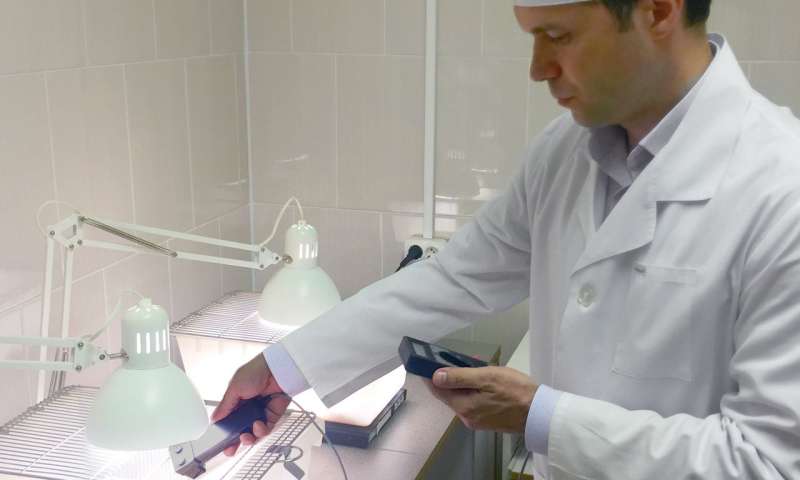Scientists show that light therapy may increase blood pressure in hypertension

A team from the Institute of Medicine, RUDN University discovered that light therapy (treating mental disorders with bright light) increased blood pressure in animals with inherited hypertension. It will help to make light therapy safer for patients with essential hypertension. The report was presented at the Annual Meeting of the Society for Light Treatment and Biological Rhythms in Groningen, the Netherlands on June 21-24, 2018. The conference abstracts were published in the Journal Neuropsychobiology.
Light therapy (phototherapy) is used to treat sleep disorders, depression and seasonal mental disorders. In order to study its effects on the cardiovascular system (especially in case of stable increase in blood pressure) and to make phototherapy safer for patients suffering from hypertension, experts from RUDN University conducted experiments on rats for five months.
The experiments involved healthy animals and spontaneously hypertensive rats. In the animals of both groups, blood pressure and heart rate were monitored during daytime and nighttime periods. For this purpose, miniature devices monitoring blood pressure, ECG and motion activity continuously for 24 hours were implanted into the animal bodies. The animals lived in cages with a stable light pattern consisting of 12 hours of complete darkness followed by 12 hours of light at the level of about 300 lux (similar to average office lighting). Then the scientists carried out a session of phototherapy increasing the light intensity level to 10,000 lux (similar to sunlight in dappled shade, for example, under a tree). Blood pressure and heart rate were registered for 24 hours on the day before the session (as a control measurement) and on the day of bright light exposure.
The results of the experiment showed that under the action of bright light blood pressure in rats with inherited hypertension increased by 10 mm Hg on the average. The changes were characteristic of both systolic and diastolic blood pressure, i.e. the values during heart muscle contraction and relaxation, correspondingly (they are usually specified in the results of measurements, e.g. 120/80 mm Hg). The effect remained notable for several hours, even when the lighting returned to the regular levels. No deviations from the average values of blood pressure were registered in healthy animals with normal blood pressure. Heart rate did not change in either of the groups.
"We can be sure now: When phototherapy is prescribed, concomitant conditions should also be taken into consideration, including hypertension of different origin. We may suggest that in these cases the intensity of light should be milder. This can be achieved either by reducing the time of exposure or the brightness of light," said Mikhail Blagonravov, MD, head of V.A. Frolov Department of General Pathology and Pathological Physiology, the Institute of Medicine, RUDN University.
More information: Chronobiology: Society for Light Treatment and Biological Rhythms, 30th Annual Meeting, Groningen (The Netherlands), June 21–24, 2018, Neuropsychobiology (2018). DOI: 10.1159/000489584

















